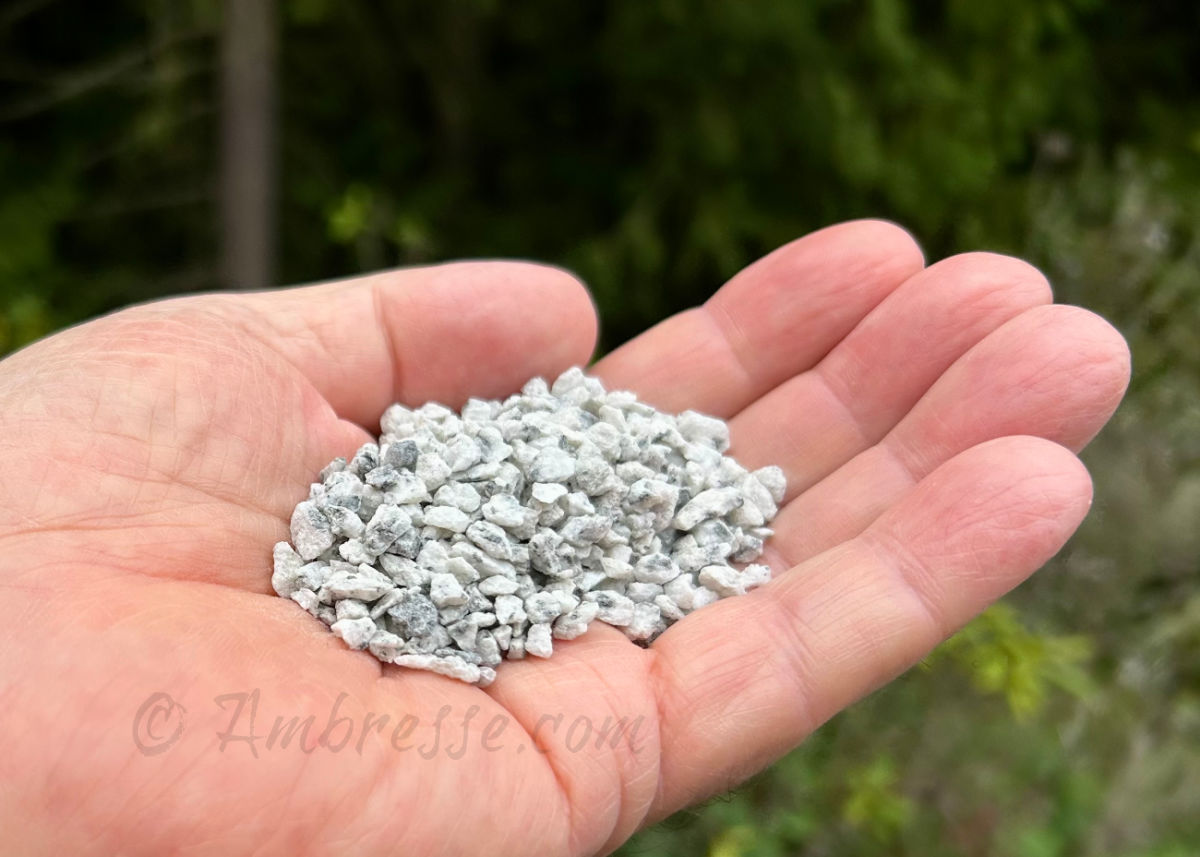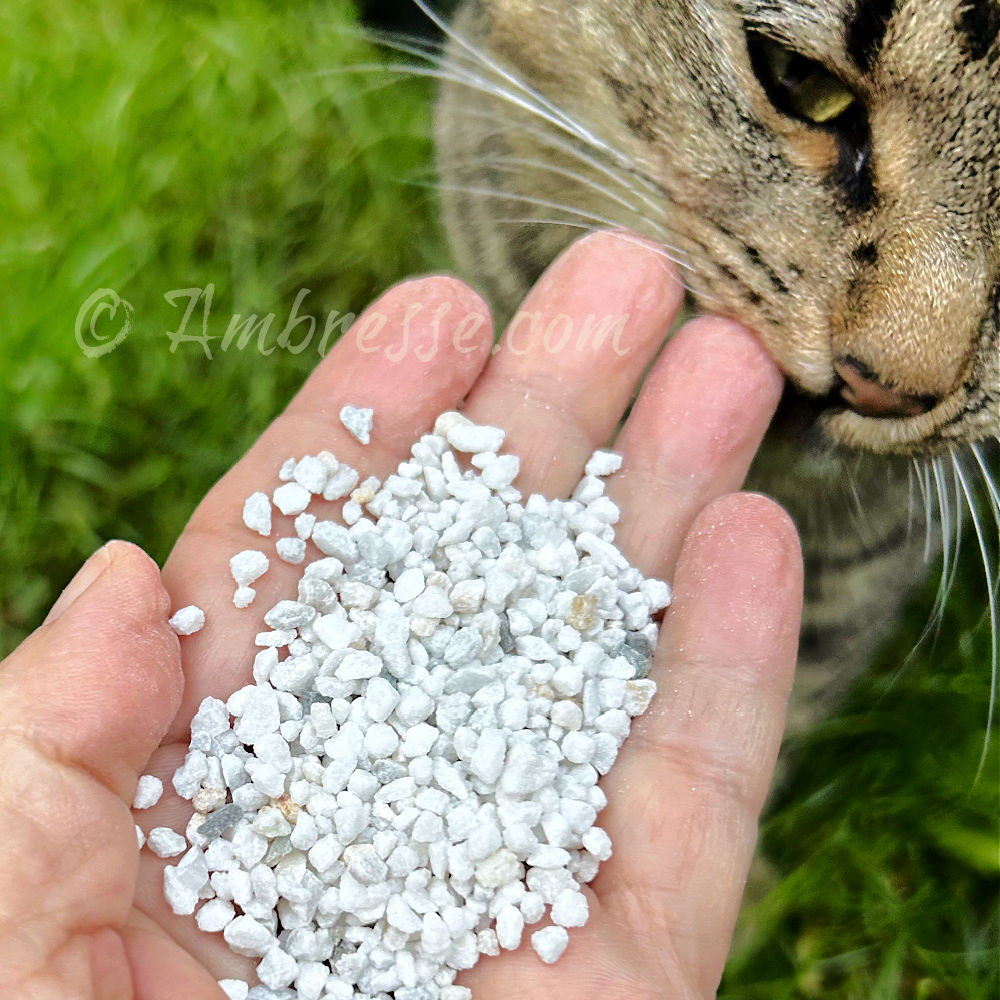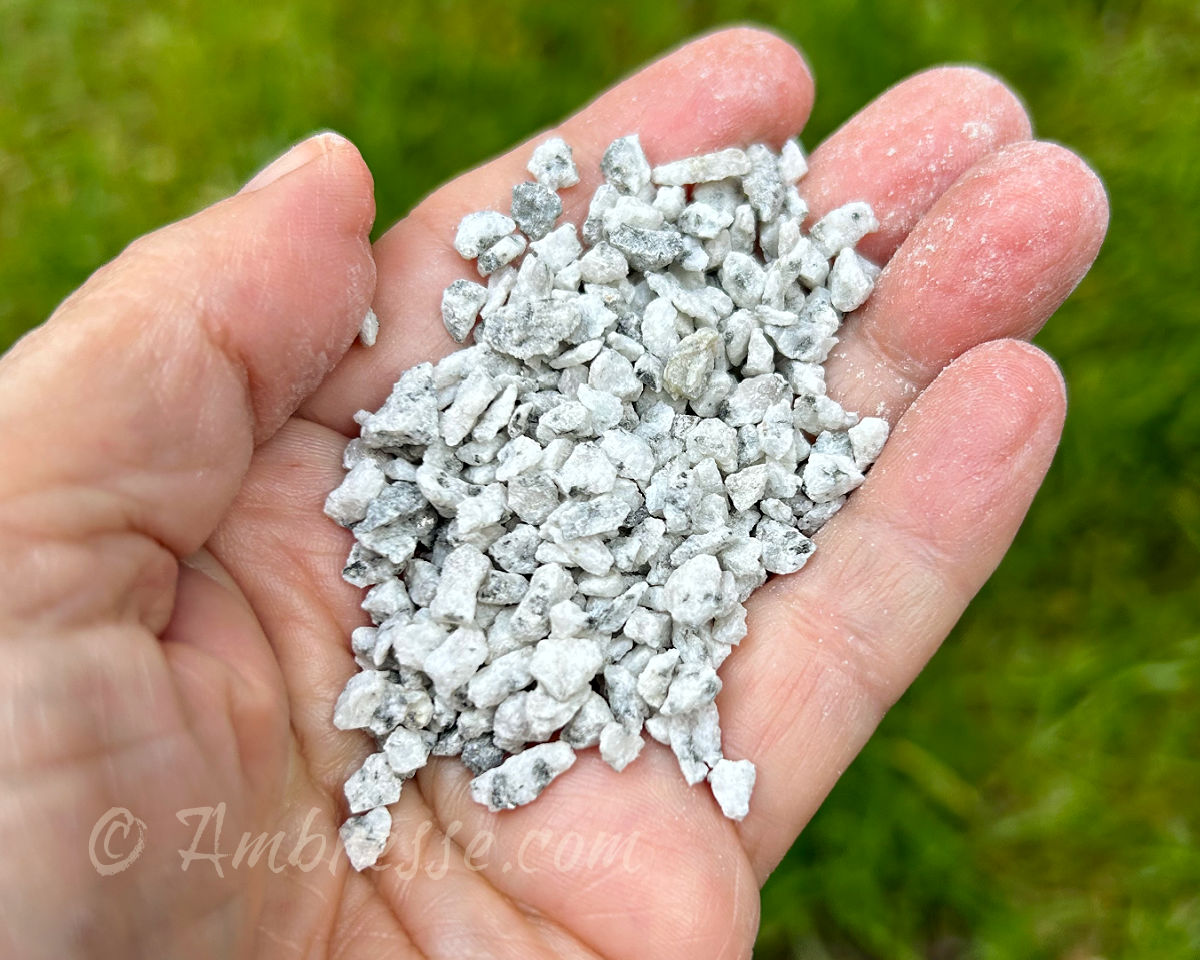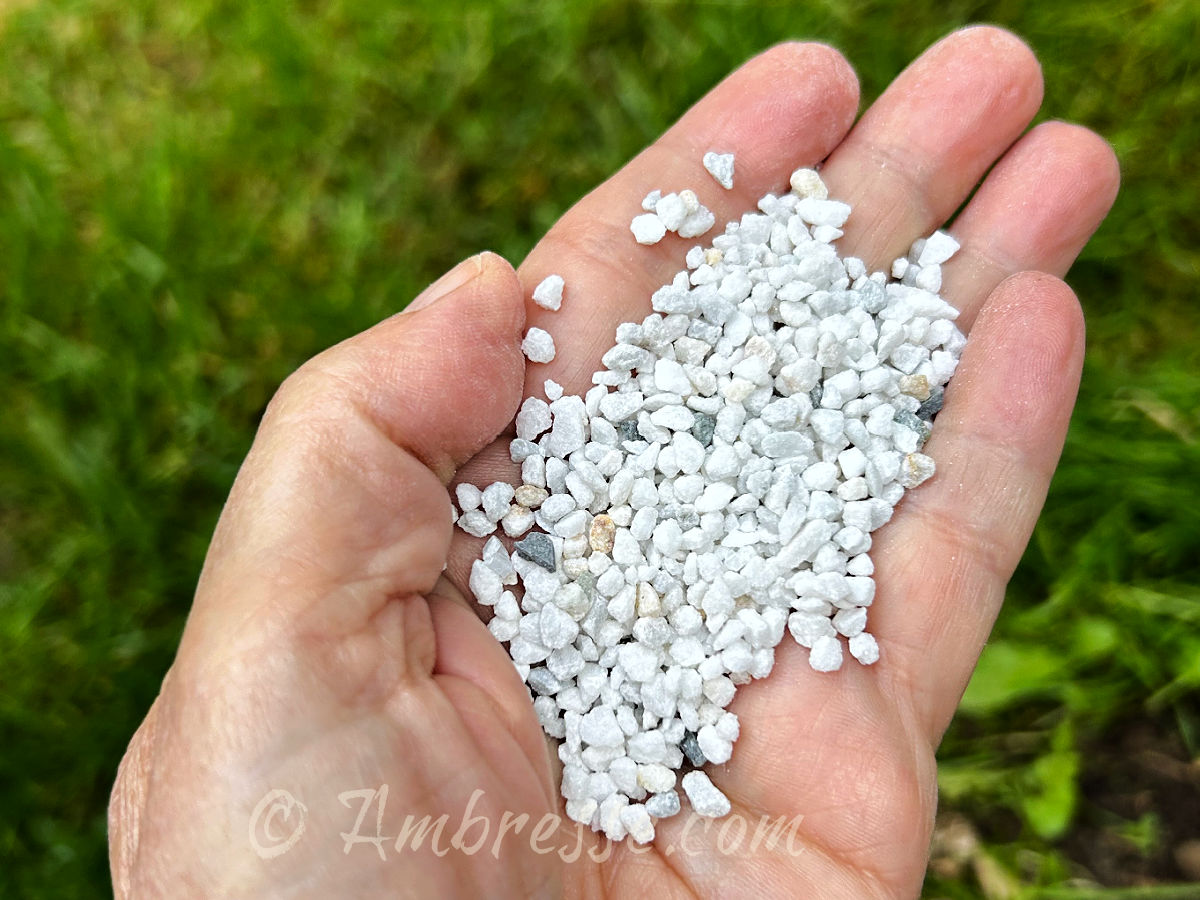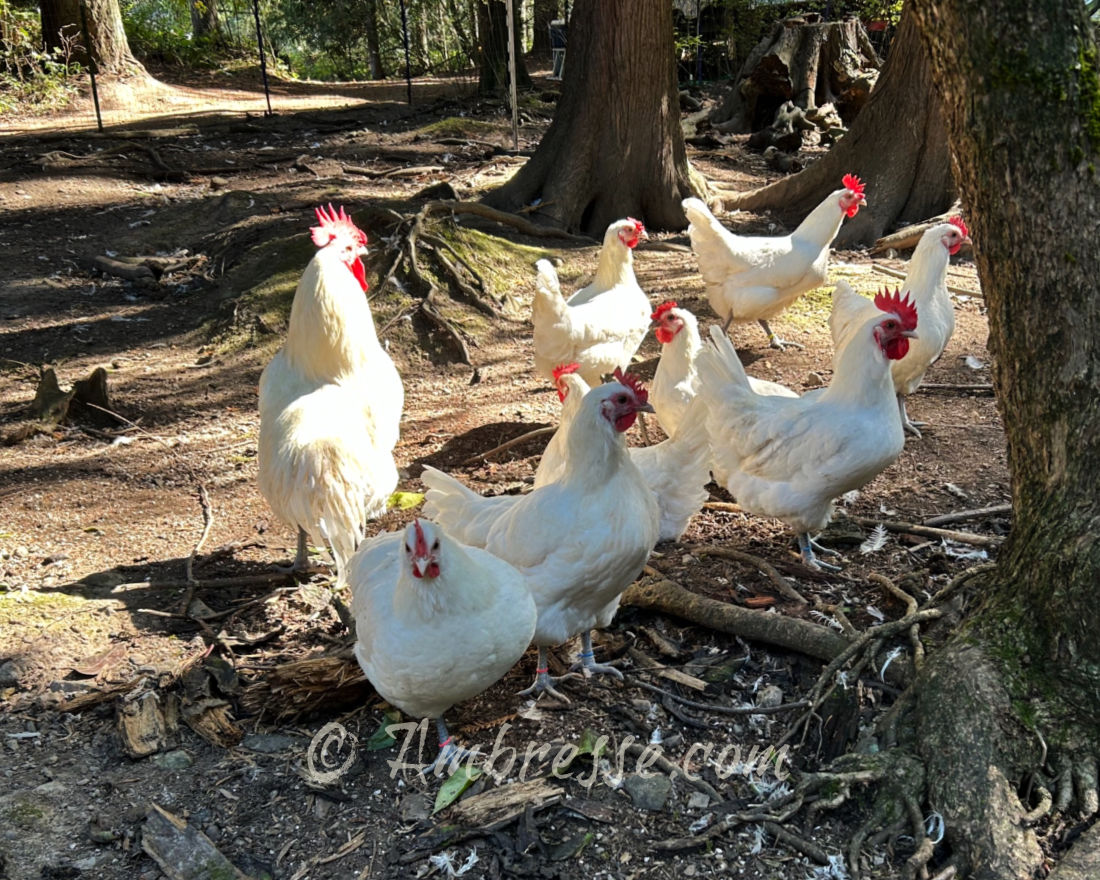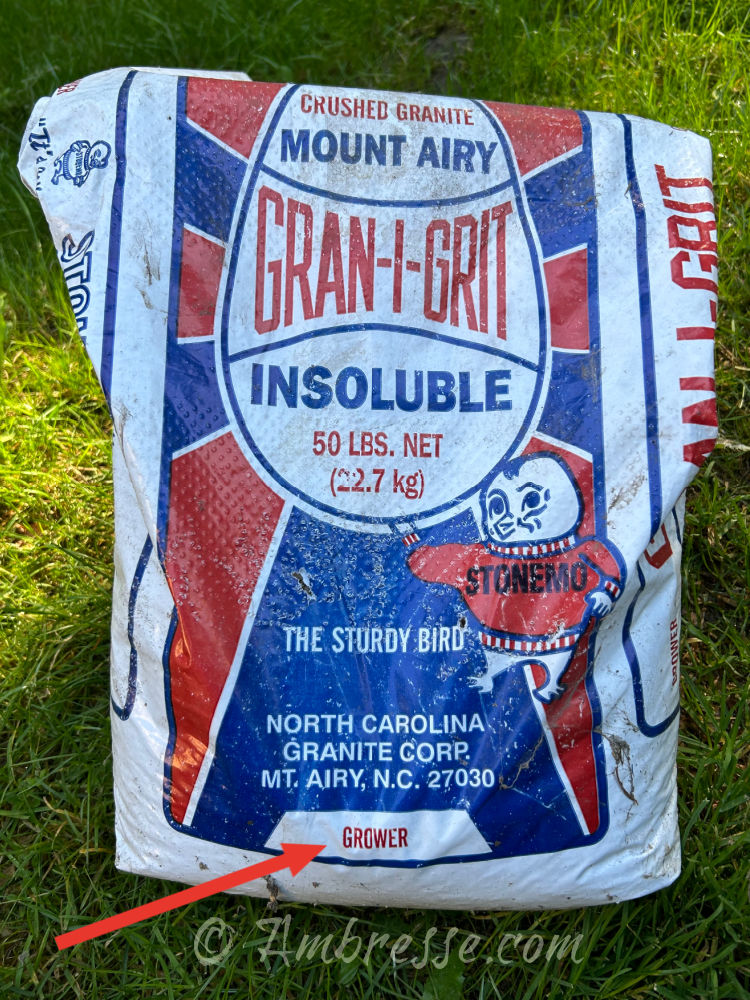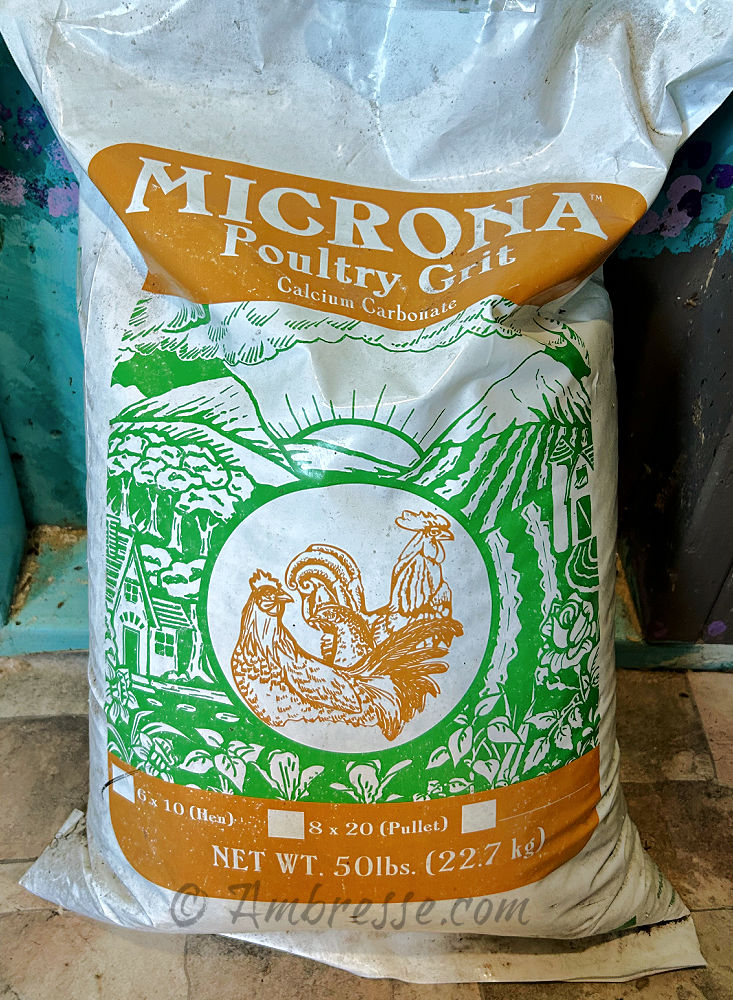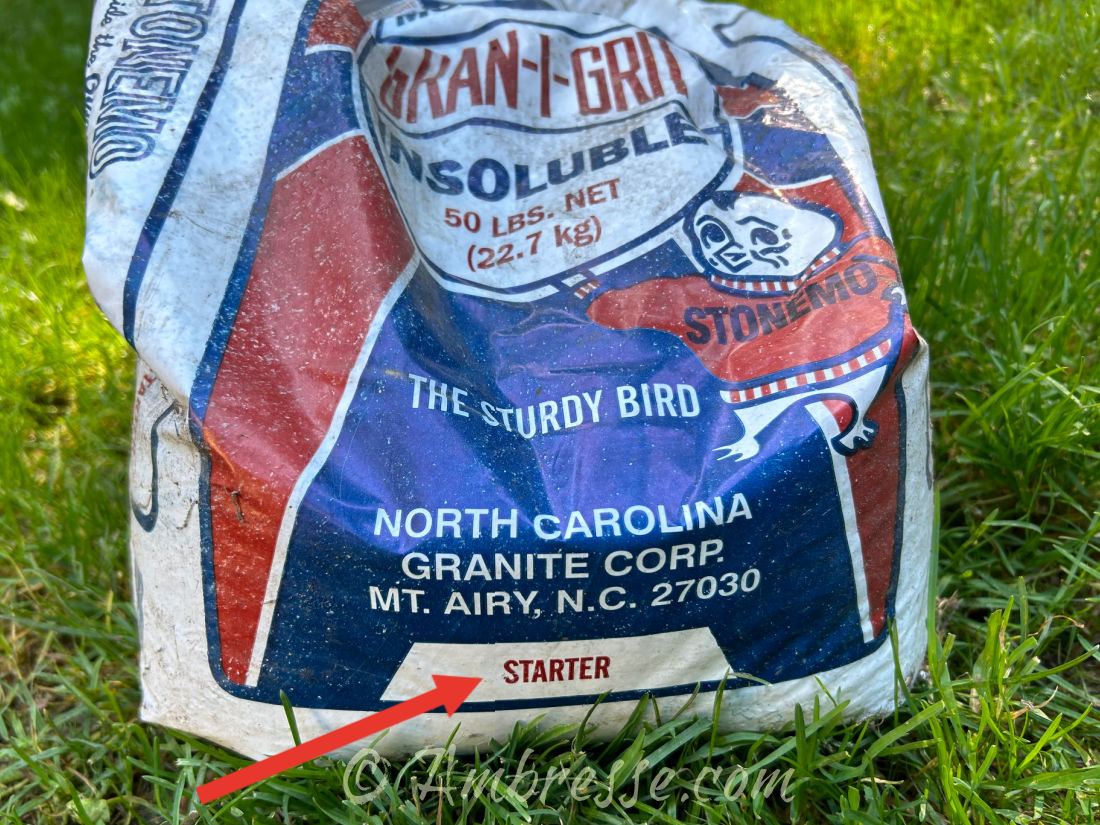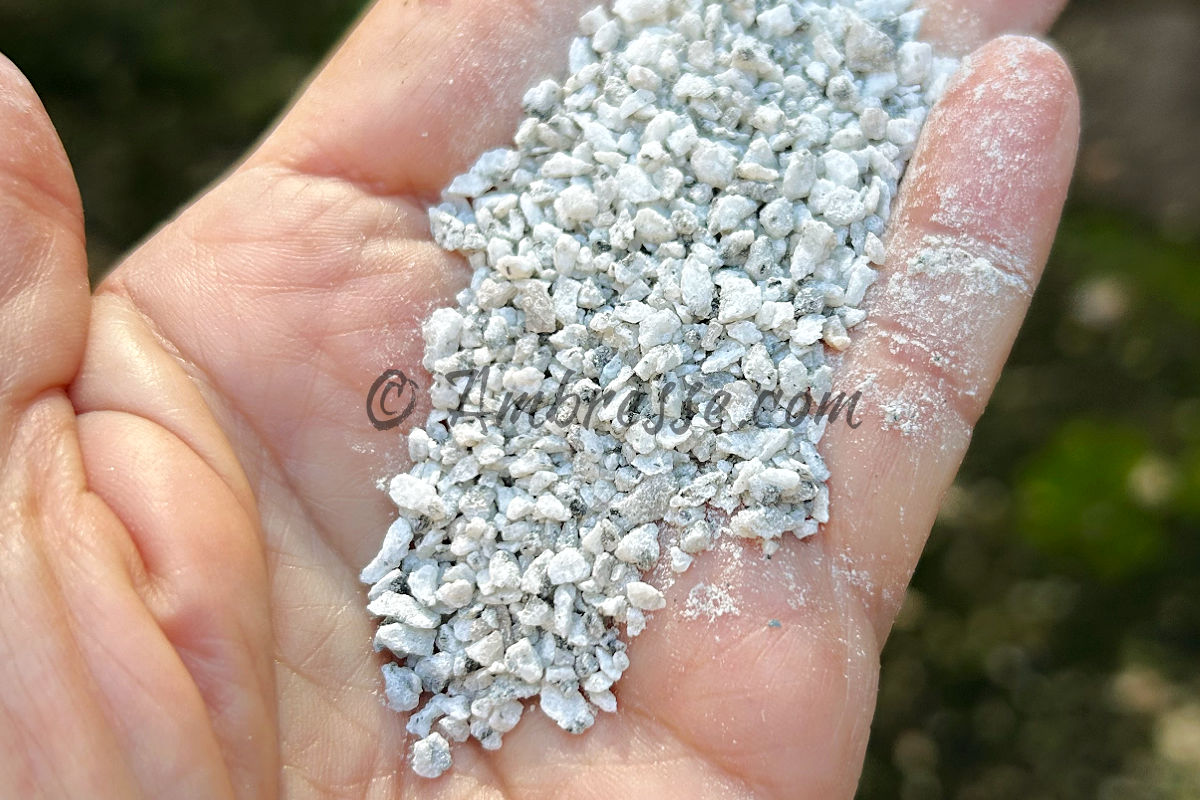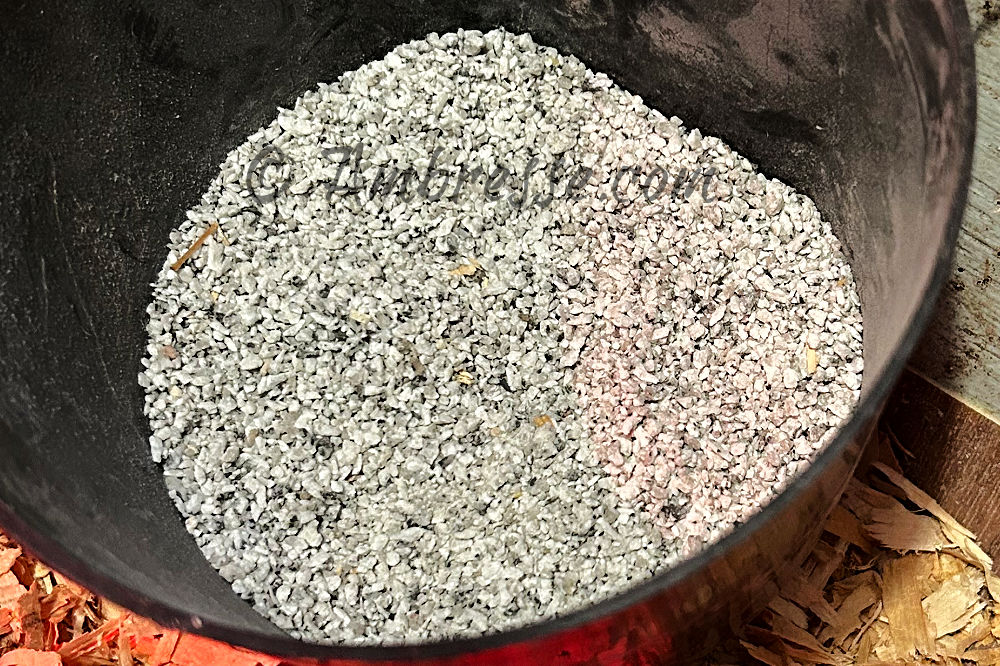Chicken Grit
Chicken Grit is Great for Overall Chicken Health and Farm Profitability!
By improving efficiency of digestion, chicken health improves and parasite loads decrease. Healthier chickens mean the profitability of your enterprise grows, as you feed granite grit for chickens to your flock, from chick to adult.
What is granite grit? These are little granite pebbles that sit in the chicken's gizzard and serve an essential function -- they grind up the food, bugs, seeds, and table scraps that the chickens eat, so that everything can be properly digested.
Chicken grit is important because chickens don't have teeth or any other grinding mechanism. When free-range or pasture foraging, chickens will also forage for correctly sized rocks to swallow. The rocks land in the gizzard where they stay and perform their functions until one by one they begin to move along into the intestines and out onto the ground again. Day by day, the chicken eats more grit (especially when supplied by the farmer), and the gizzard remains replenished.
While the absence of farmer-provided grit may not be fatal, providing the grit will certainly boost digestive efficiency, saving you money and supporting flock health as a whole.
Chicken Grit: Granite vs. Limestone
When talking about grit for chickens in connection with digestion, think granite grit. (Most of this page is about granite grit.)
When talking about grit and calcium for egg shell production, think limestone, oyster shell, or calcium carbonate (limestone by another name). This grit is primarily made up of calcium, which the hen happily gobbles up at will in order to produce her eggs.
Calcium carbonate looks very much like granite grit, and for this reason may be referred to as grit or mistaken for granite grit which is very helpful for digestion.
Calcium carbonate is soluble. The calcium leaches out, supplying calcium to the hen. An adequate supply of calcium results in a greater ability to build eggs, and so the hen will be able to lay eggs more frequently.
Questions about Chicken Grit
Some folks maintain that feeding extra grit is optional, for one or more reasons:
- Chickens do fine without grit, including meat birds that only live a matter of weeks
- Commercial pellets/crumbles are already ground finely enough, so they don't need grit for digestion
- Chickens find enough grit on the ground, so they don’t need extra
Let’s explore these ideas by looking at the results of various feed practices and a little bit of science. Click on one of the above links to drop down to the section on this page covering the topic you're interested in, or simply keep reading.
Do chickens do fine without grit?
Well, they can usually survive, but do they actually thrive? What we know is factual, is that if grit intake is insufficient, chickens will be at higher risk for digestive issues – some of them life-threatening – especially when commercial chicken feeds are on the menu.
Do chickens do “fine" without grit? You decide for yourself after considering the following contrasting statistics:
Weedy Weidenthal1 (I like him already!) was the person who recently got my wheels turning about the ramifications of not feeding granite grit. In my earliest years of chicken keeping, it was easier to simply let the free-ranging birds find their own grit. Logic said they would find what they needed on their own as they foraged in our pasture.
The more familiar I became with poultry, the more compassion I felt for the birds, and the more it felt like laziness to overlook the chicken grit, so I found a source for granite grit and have been feeding it and oyster shell for at least 10 years.
But I still didn't realize how essential grit can be for both chicken health and optimal profitability.
Weedy operates a poultry ranch in hot, dry, gravelly Arizona. He literally did a mini-study on his ranch, cataloguing the differences between an operation without added grit, and one where he supplied added grit to his Cornish Cross meat birds and other fowl. Here is a very brief synopsis of what he discovered1:
First, 20% greater feed efficiency. Just by feeding grit!
His market birds ate less (10% less), all while growing bigger (10% bigger). This was the result of much improved digestion. The bonus was money saved.
Secondly, the mortality rate dropped (1.7%: He lost only 5 birds out of a group of 300 meat birds). Increased feed efficiency resulted in increased nutritional status and a decrease in risks to health such as accidents, heart attacks, or digestive issues. (Wise husbandry plays a factor.)
For every bird that doesn’t die, you put money in your pocket when you sell it. It’s a win-win, just for adding nearly free rocks to the chicken's rations regularly.
Are commercial pellets/crumbles already finely ground enough to eliminate the need for grit??
This is a common argument. Interestingly, some big poultry farmers defend the practice of not feeding grit, maintaining that the short-lived market birds don't need it.
And perhaps not so surprisingly, feed companies sometimes promulgate this belief, perhaps in order to sell more feed or to defend their milling methods.
Whatever the reasoning, chicken raisers should grasp a
couple very important details:
- Finely ground feed is one cause of slower digestion. Slow digestion is known to increase the possibility of necrotic enteritis2 (gangrenous patches in the intestines). Feeding granite grit counters this disease process, protecting the birds and increasing their overall health. (All the more reason to feed chicken grit to Cornish Cross market birds.)
- A properly functioning gizzard with plenty of rocks for grinding helps to minimize an overgrowth of intestinal parasite populations.
All of that adds up to a significant bump in profit by simply adding handfuls of dirt-cheap granite grit to the chicken’s rations.
If you are doubtful, just do what Weedy Weidenthal did - try it both ways and see if adding chicken grit will help your own flock.

Understanding Avian Necrotizing Enteritis
Avian Necrotizing Enteritis is caused by Clostridium perfringens, which is a normal inhabitant in poultry intestines. As long as the bowels are functioning properly, no disease will result from the presence of C. perfringens in the bowel.
However, dietary factors such as feeds containing certain grains such as wheat, rye, or barley, or higher levels of animal protein and animal fat, or a slowed transit time, are ways to explode a population of C. perfringens within the gut, resulting in necrotic enteritis, a specific type of intestinal inflammation characterized by necrotic (gangrenous) patches in the lining of the intestines.
Co-infection with Coccidiosis can precipitate, or compound the problem, which typically occurs when chicks are between 16 and 28 days old. Young Cornish Cross meat birds are especially at risk for that reason, however the problem can occur any time one or more of these factors occur together and create the ideal conditions for the overgrowth of intestinal C. perfringens populations. Mortality rates in young meat birds can be high.
Treatments for Avian Necrotizing Enteritis include antibiotics such as bacitracin, lincomycin, or oxytetracycline (or others), which are usually effective.
Prevention of Avian Necrotizing Enteritis includes free-feeding granite grit, because grit speeds digestion and gut transit time.
Target any predisposing factors by ensuring a balanced diet. Address and treat any co-disease such as coccidiosis.

Can
chickens find enough grit on the ground to eliminate the need to offer grit?
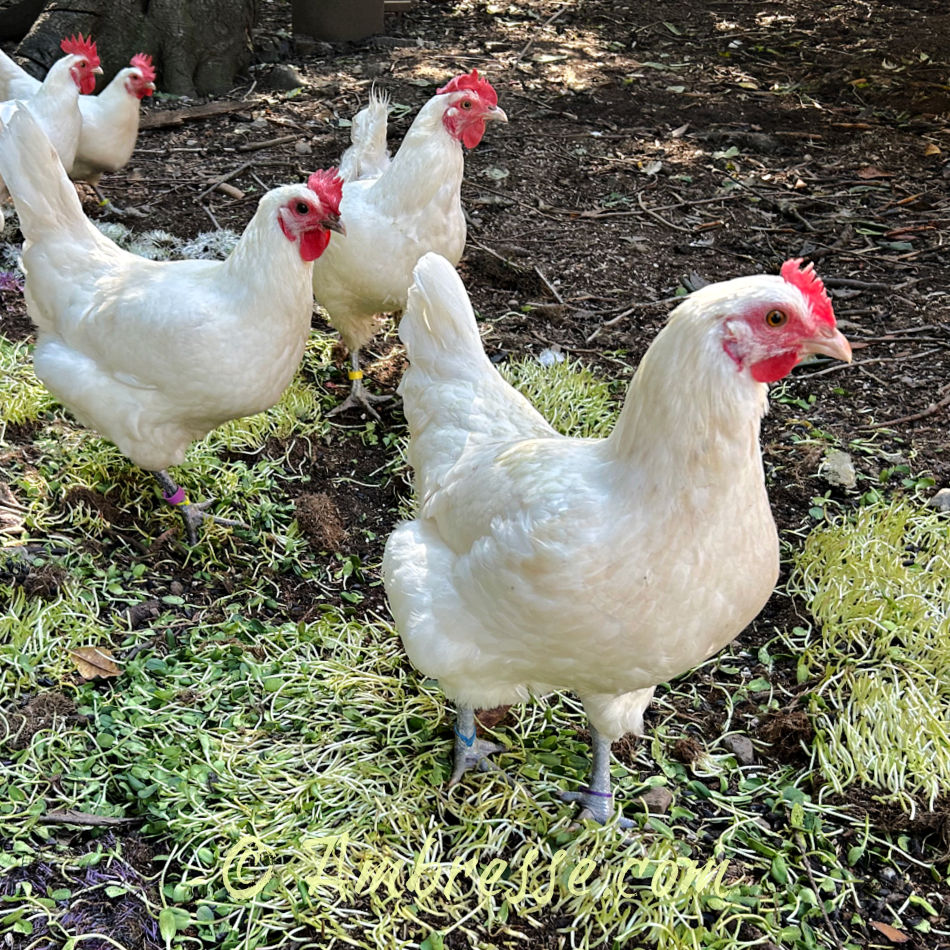
Technically, this is probably possible. Wild chickens wander far and wide as they forage, obtaining all they need from their surroundings, although I doubt they thrive to the extent that they can within an optimally managed poultry flock.
But within managed flocks, whether backyard breeder egg flocks or large meat production flocks, the farmer can optimize the health and production goals of the flock by paying close attention to the factors within his control. Supplying chicken grit is a prime example of good management of a known dietary factor that will maximize the chicken's digestion.
Regarding the ability of a chicken to find sufficient grit for its needs on its own, Mr. Weidenthal tested the idea by examining the soil his own many chickens were roaming on. He literally scraped up a bunch of the gravelly soil and ground cover and examined the rocks for size. He reported on his Facebook page that only 5% of the gravel was adequate for young broilers and 10% was good for broilers. (I suspect he was a bit shocked!)
It costs so little to simply supply the chicken grit! In my experience, chickens already on pasture, dirt, or gravel, will still immediately help themselves to freshly offered granite grit, which might be your clue that supplying it is a smart chicken husbandry move.
Granite Grit is Recommended by the APPPA
The American Pastured Poultry Producers Association (APPPA) communicates the husbandry practices that best support pastured poultry. They share these statistics on their website3:
- A “lack of grit can result in as much as 20% greater feed consumption.”
- When grit is regularly fed, poultry have up to 50% bigger gizzards, resulting in a stronger masticating muscle and therefore better digestion.
- Feeding grit increases egg production by up to 9.6%, and reduces feed consumption in a laying flock by up to 7.1%.
- Feeding (limestone) grit results in thicker egg shells which helps to reduce losses from accidental egg breakage.
- Feeding (granite) grit results in an overall increase in the health of the flock.
- APPPA recommends supplementation with both granite grit and soluble grit such as oyster shells or limestone, which together will provide the greatest percentages of improvements in a laying flock.
Grit isn’t free, but it costs very little per ounce, especially if you have a local source from which you can purchase in bulk. It seems to last and last - I bought 50 pounds of granite grit like four years ago, and am finally reaching the bottom of the bag.
The best chicken grit needs to be insoluble (granite), and sized correctly for the size of the chicken - chick grit for the babies, grower grit for the growing market birds, and adult poultry grit for layers and adult chickens.
Oyster Shell Chicken Grit: As young pullets come into lay, they will appreciate also receiving a calcium supplement in the form of limestone, calcium carbonate or the popular oyster shell chicken grit. Calcium supplements are more or less soluble. My calcium carbonate supplement is called "grit" on the packaging, and it looks a lot like granite grit.
Don't substitute the granite grit with oyster shell, but add the oyster shell as another self-serve offering to which the chickens have access.
Where to Get Chicken Grit
Your local feed store or poultry supply is very likely to sell granite and limestone grits.
Amazon sells poultry grit. Costs on Amazon in late 2024 are roughly as follows (free shipping with Prime):
- Granite Grit sized for laying hens, 5 lb for $10 ($0.13/oz)
- Granite Grit sized for laying hens, 25 pounds for $22 ($0.05/oz)
- Granite Grit sized for laying hens (Gran-i-Grit), 50 pounds for $50 ($0.06/oz)
- By the ton at Gran-i-Grit: $78.50, or $1.86/50 pound bag, or $0.04/pound. (Bulk price dates to 2014.)
Tractor Supply sells poultry grit.
- They sell Oyster Shell calcium supplement grit in 5-pounds and 50 pounds for prices very comparable to Amazon prices.
- They sell Manna Pro Poultry Grit (granite) with Probiotics in a 25 pound size for $15.00
Below: Bags of half-used granite grit and calcium carbonate grit at Ambresse Acres. These products have lasted several years.
Baby Chick Grit
Baby Chick Grit is granite grit in several tiny sizes all in the same bag. The grit is generally not much larger than beach sand.
Chicks need grit too! They do very well with this smaller size grit for up to 8 weeks. And since their immune systems are still firing up and needing to meet an onslaught of sudden challenges, all the more reason to give them chick grit. It'll help to limit their parasite load and keep their digestive systems chugging along in a healthy manner.
How to feed granite grit:
Granite grit can be free-fed. Offer granite grit in a separate container or hanging feeder. The birds will self-regulate. Many types of chicken feeders can be repurposed as chicken grit feeders.
Granite grit can also be sprinkled on top of the commercial feed pellets or crumbles which are in their feeders. Ensure that you provide enough grit for the number of chickens being fed.
Grit can be mixed into the feed ration, especially if you mix your own rations. Add the grit at a rate of 0.5% to 0.75% of the total ration. The recommended ratio of grit to wheat is 1:4.
NOTE: Grand Finale Finish Feed has the grit added right into the feed.
The birds lick their plates clean of both feed and grit! They don't eat around the grit like children disdaining their peas. They don't spit out the grit like so many watermelon seeds.
On processing day, gizzards are well filled with the same granite grit that we mixed into the finishing feed formula. This is why I think that grit is an integral part of good poultry management.
Implications for American Bresse Chickens
As dual-purpose heritage chickens, American Bresse grow very fast. This is great - the earlier the extra cockerels can be processed, the more efficient and cost effective is the enterprise.
Some strains in the United States, including our birds at Ambresse Acres, are selectively bred to rapidly put on meaty muscles and ribbons of fat in concurrence with generally rapid growth. That kind of growth will be optimized by balanced rations and excellent digestion.
Who knew that chicken grit supplementation helps! Enhanced digestion keeps the birds growing well, protects them from parasites and pathogenic bacteria such as C. perfringens, and reduced mortality swells the bottom line. I like that!
- Home
- American Bresse Chickens
- Chicken Grit
Overheard...
"I processed my first batch of Bresse... Today I roasted one according (somewhat) to the recipe posted on Ambresse. It was delicious! Tender, moist and succulent... So happy I chose this breed! (B.E., MN, 12/11/2024).
"Your site has the first accurate information about American Bresse chickens that I have seen in English. Thanks for your diligent work" (L. Wooton, NC, 12/17/2024).
Translate This Page
Traduire Cette Page
Traduzca Esta Pagina

News
American Bresse Breed Club web pages can be found under the Breed Club tab on the navigation bar. Any changes in Club status will be posted here!
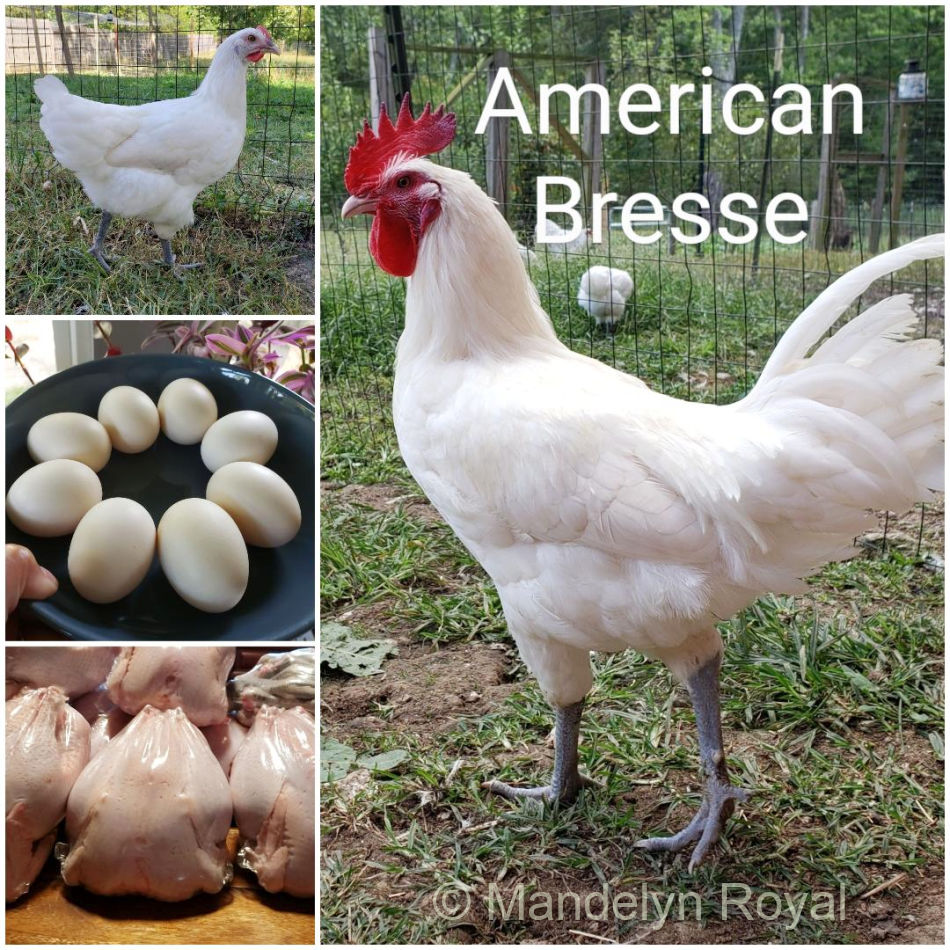
Photo credit: Mandelyn Royal.
